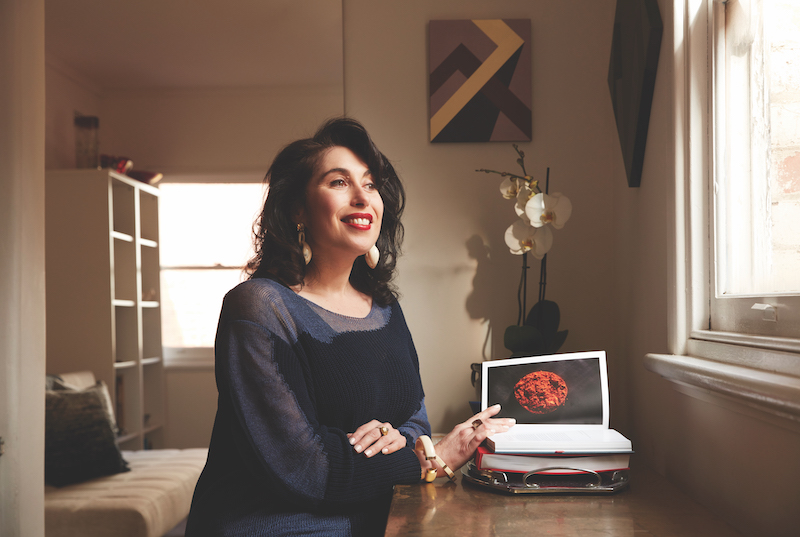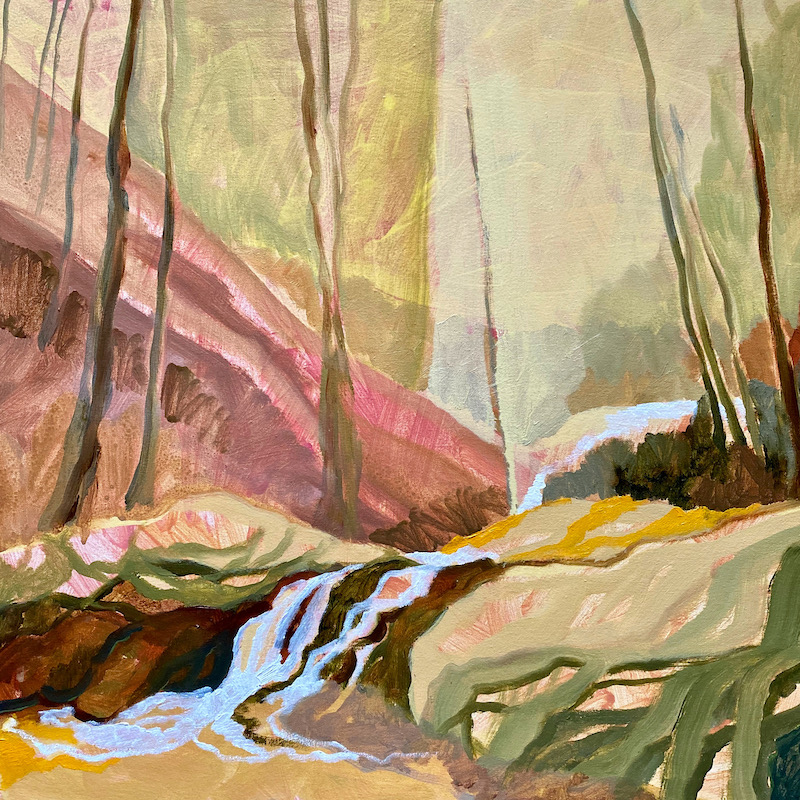Samara Adamson-Pinczewski: Getting into Shape
Samara Adamson-Pinczewski found in Abstraction a partner for life. Her latest work employs iridescent colours that reflect and refract light in highly unpredictable ways.
Words: Louise Martin-Chew
Photography: Zan Wimberley
The shaped, intensely coloured depths of Samara Adamson-Pinczewski’s paintings are designed to engage the viewer. Not just aesthetically, but psychologically and physically. Abstraction snared her interests from the earliest years of her undergraduate study (completed in 1998), and in recent times she has worked with shaped canvases, two- and three-dimensional painted constructions and reliefs on aluminium panel and wood. Late last year, she began to move into sculptural forms. Her 2020 exhibition at Charles Nodrum Gallery, Melbourne, includes work in all of these modes.
“I don’t want the viewer to stand still in front of my work,” says the artist. “They need to move around it, to be participants, to experience the colour shifts and changes. Scale, structure, colour and surface texture are my strategies to engage. In my view, these works are incomplete without an audience.”
Adamson-Pinczewski’s recent foray into sculpture was first showcased at the 2019 SPRING 1883 art fair in Sydney. The series, titled Sculpture Around the Corner, “were my first sculptures and they were highly irregular, asymmetric forms that are imperceptible from any one angle or viewing position”, says the artist. The artist’s 2020 Around the Corner iterations are small sculptures that take the oblique angles and reflective surfaces seen in her paintings into a three-dimensional representation that keeps the eye and body moving, restlessly traversing sharp edges and colour shifts. “Strangely, they are works of their time, and with the COVID-19 crisis it is clear that no one knows what is around the corner. For me, that is another indication of the relevance of Abstraction now.”
Alongside Abstraction, Adamson-Pinczewski’s process is driven by an interest in the relationship between urban space and architecture. “My studio is in inner Melbourne’s Carlton and the view from my window in recent years has significantly changed with the construction of multicoloured glass high-rise buildings. Some of my new paintings refer to that view, in their vertical structure and reflective colours and surface textures.”
The new paintings employ iridescent colours that reflect and refract light in highly unpredictable ways. The artist meticulously arranges her geometric structures and reflective colours to create a sense of spatial ambiguity, dynamism and tension. “I am interested in how we see, perceive, experience and engage with the physical world around us. So, while these are non-objective paintings, they reference a particular point in the real world.”
“The use of iridescent acrylics creates all sorts of interesting effects as light levels change throughout the day and night,” says the Melbourne gallerist Charles Nodrum, who has represented Adamson-Pinczewski since 2016. “The work has a slow burn – the paintings reveal themselves over time, building in strength and offering their subtleties gradually.”
Adamson-Pinczewski’s was drawn to art from a young age. “Luckily my parents encouraged me. I had extra art lessons outside school. I was taken to the National Gallery of Victoria to see incredible exhibitions,” she says. In Abstraction, she found an opportunity to develop her own visual language. The granddaughter of Polish immigrants who started a scrap metal yard, her parents brought home different metallic objects in to decorate her childhood home. Her first aluminium sheeting came from the same scrapyard and she sees the forms in her painting, colour and surface choices as reference to that family history. “A lot of my source materials come from buildings in the city and are revitalised as I reuse them in new ways. Recycling is in my blood.”
Colour is also intrinsic. “I started working with metallic pigments early on, in the late 1990s. Metallic or iridescent pigments really attract me because they are characteristically unstable and interactive. Reflective pigments are highly responsive to physical changes in the surrounding environment, including atmospheric shifts. They can severely adjust the appearance of an artwork in paradoxical ways. I believe that new visual and optical experiences can be had through the use of new paint technologies.”
Samara’s highly crafted and burnished surfaces, in their intense colours, sculpt the space and etch their way into a viewer’s memory. She has held 11 solo exhibitions since 2000 and been awarded prestigious residencies in Paris and New York.
This article was originally published in Art Collector issue 93, JUL – SEP 2020.









